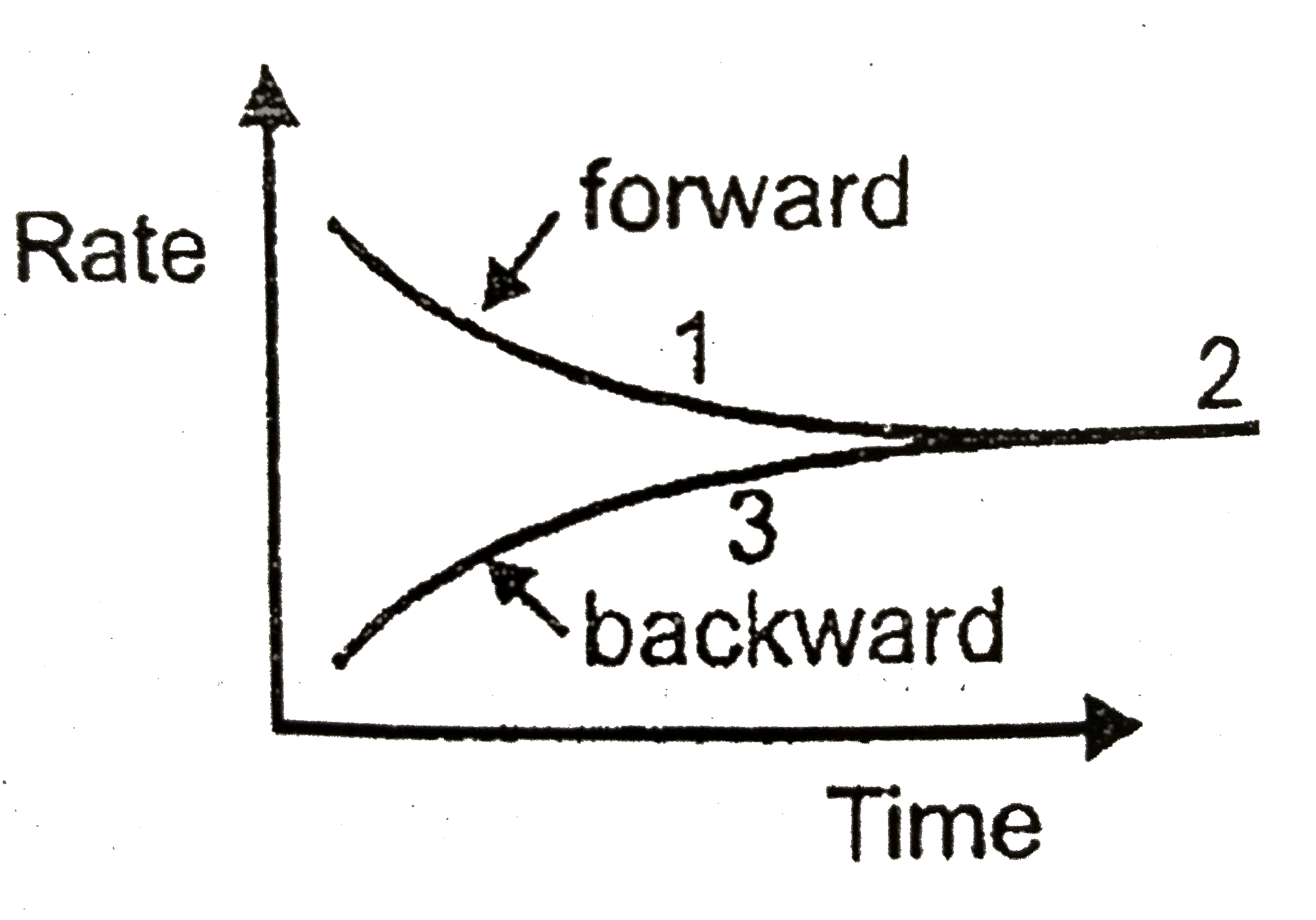Why is it useful to compare Q with K?
What is the situation when
a. Q=K b. Q<K c.Q>K?Solution in Telugu
Q.and K are compared to predict the direction of reaction :
Q = K indicates that the reaction mixture is already at equilibrium.
Topper's Solved these Questions
- CHEMICAL EQUILIBRIUM AND ACIDS BASES BOOK - VIKRAM PUBLICATION ( ANDHRA PUBLICATION)CHAPTER - CHEMICAL EQUILIBRIUM AND ACIDS BASES EXERCISE - LONG ANSWER QUESTIONS
31 Videos
- CHEMICAL EQUILIBRIUM AND ACIDS BASES BOOK - VIKRAM PUBLICATION ( ANDHRA PUBLICATION)CHAPTER - CHEMICAL EQUILIBRIUM AND ACIDS BASES EXERCISE - VERY SHORT ANSWER QUESTIONS
40 Videos
- ATOMIC STRUCTUREBOOK - VIKRAM PUBLICATION ( ANDHRA PUBLICATION)CHAPTER - ATOMIC STRUCTUREEXERCISE - LONG ANSWER QUESTIONS
15 Videos
- CLASSIFICATION OF ELEMENTS AND PERIODICITY IN PROPERTIESBOOK - VIKRAM PUBLICATION ( ANDHRA PUBLICATION)CHAPTER - CLASSIFICATION OF ELEMENTS AND PERIODICITY IN PROPERTIESEXERCISE - Long Answer Questions
24 Videos
Similar Questions
What are equilibrium processes? Explain equilibrium in Physical and Chemical processes with examples.
View SolutionState law of chemical equilibrium.
View SolutionExplain Rutherford 's nuclear of an atom . What are its drawbacks ?
View SolutionDiscuss in detail about the classification of elements by Mendeleeff.
View SolutionIf c is very small when compared to k then ((k)/(k+c))^((1)/(2))+((k)/(k-c))^((1)/(2))=
View SolutionMass action rato or reaction quotient Q for a reaction can be calculate using the law of masss action
A(g)+B(g)⇔C(g)+D(g)
Q=[C][D][A][B]
The value of Q decides whether the reaction is at equilibrium or not.
At equilibrium, Q=K
For an equilibrium process, Q≠K
when Q>K, reaction will favour backward direction and when Q<K, it will favour direction.
Answer the following questions:
For the reaction:
2A+B⇔3C at 298K,Kc=40
A 4L vessel contains 2,1, and 4 mol of A, B and c, respectively. The reaction at the same temperature
View SolutionMass action ratio or reaction quotient Q for a reaction can be calculated using the law of mass actionl,
A(g)+B(g)⇔C(g)+D(g)
Q=[C][D][A][B]
The value of Q decides whether the reaction is at equilibrium or not.
At equilibrium, Q=K
For non-equilibrium process Q≠K
When Q>K, reaction will be favoured in backward direction and when Q<K, it will be favoured in forward direction. For the reaction : 2A+B⇔3C at 298 K, Kc=49 A 3 L vessel contains 2, 1 and 3 moles of A, B and C respectively. The reaction at the same temperature :
View SolutionWrite a relation between DeltaG and Q and deifine the meaning of each term and answer the following : Why a reaction proceeds forward when QltK and no net reaction occure when Q=K . Explain the effect of increase in presure in terms of reaction quotient Q for the reaction : CO(g)+3H_2(g)hArrCH_4(g)+H_2O(g)
View SolutionIn the reaction
PCl5(g)⇔PCi3(g)+Ci2(g)
a graph in plotted to show the variation of rate of forward and backward reactions against time. Which of the following is correc?

Q>KQ=KQ<K
View SolutionIf apq=q√k, then k= _______.
View Solution(a) Read the value of P and Q
(b) If P>Qthen k=p-q
(c )If p<q then k = p+q
(d) If p=q then k=p*q
(e ) print the answer :k
(f ) stop
If the input values P and Q are 10 and 25 then what is the oupute of the above algorhtim ?
View SolutionB E - K - Q, B B - H H - K N N Q Q
View SolutionWhy is it useful to compare Q with K ? What is the situation when a. Q=K b. QltK c. QgtK ?
View Solutionwrite a relation between ΔG and Q and define the meaning of each term and answer the following
Why a reaction proceeds forward when Q<K and no net reaction occurs when Q=K ?
View SolutionWhy is it useful to compare Q and K? Which of the following are conditions? Q = K
View Solution
